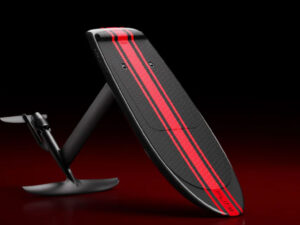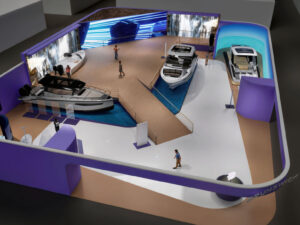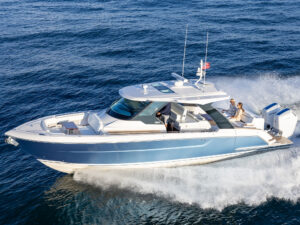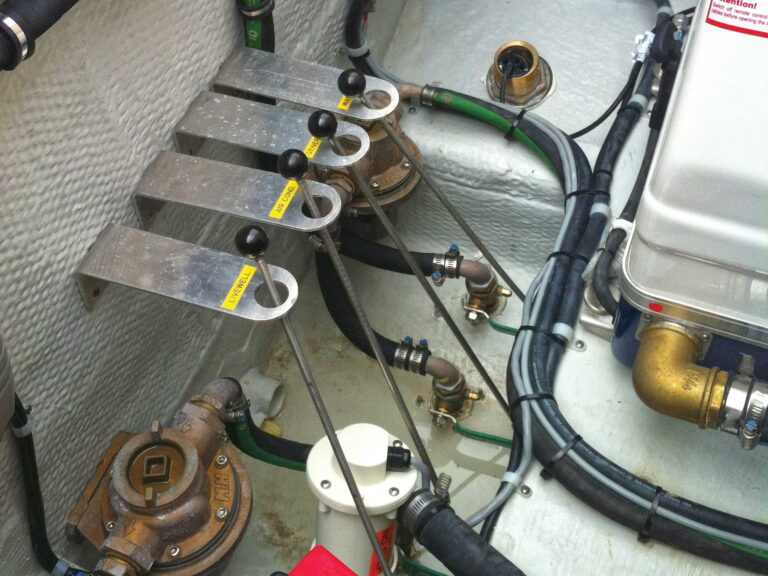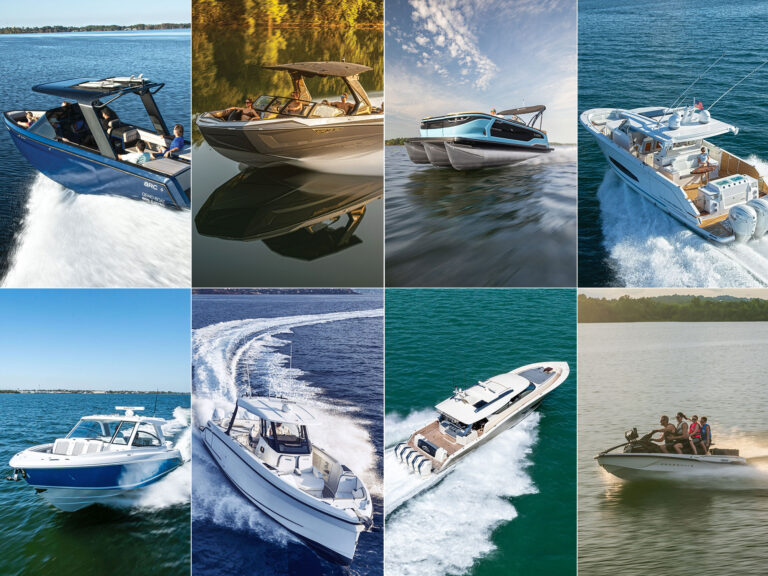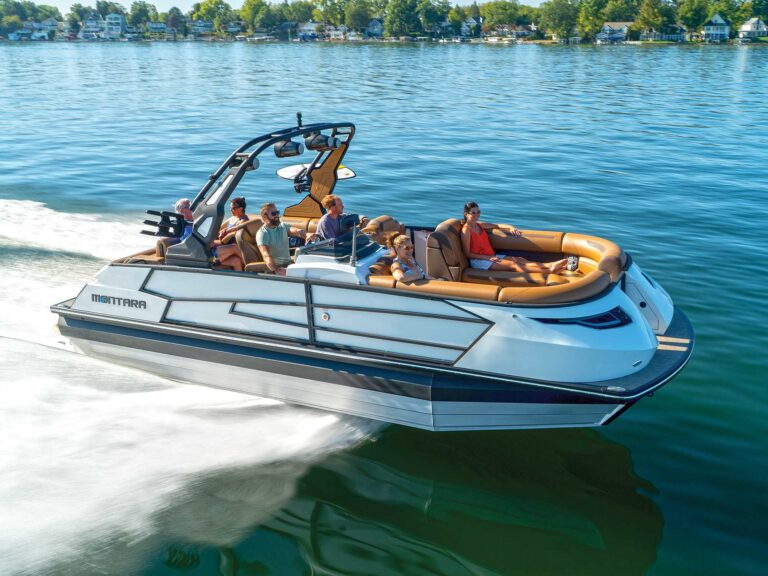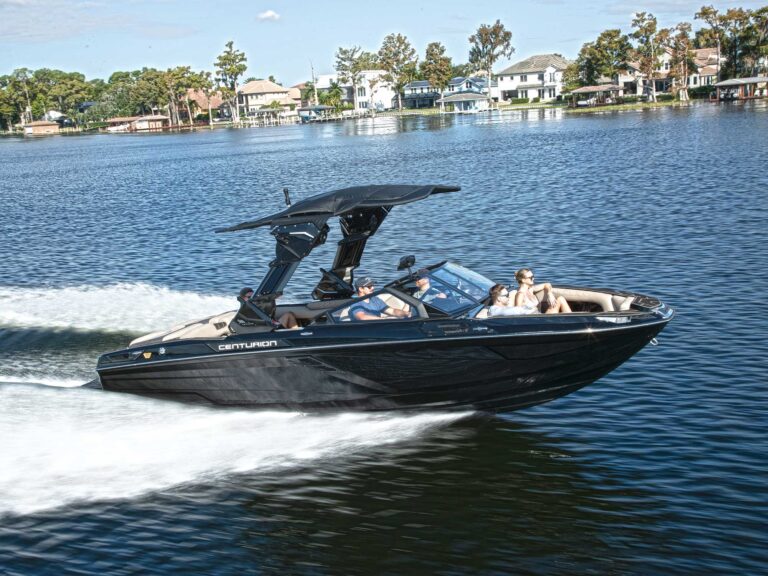
Maybe it won’t plane quickly enough, the rough-water handling is unpredictable, or the propeller ventilates in hard turns. For many, top speed is the issue; who wouldn’t want a few more miles per hour? Whatever your speed concern, it can probably be improved — though it may not be cheap or easy. Here are eight tips for improving speed and acceleration.
Videos and Photos: Document the Progress
What once was a pain (a friend with a camcorder) is now easy-peasy. Have your buddy use a phone to video your boat at speed so you can critique its performance. This is a great way to show setup experts and prop shops. Look to see if all or most spray exits the boat at the transom (none or very little exiting the hull from the sides means more efficiency). If there’s a rooster tail, it should be long and low — behind the boat 20 to 40 feet and no higher than the top of the outboard cowl — not high like a jet boat’s nozzle spray. The boat’s bow should be riding (“carrying”) at an angle of approximately 3 to 5 degrees positive incline, maximum. If you see anything other than these visual clues, the boat-and-motor setup is not right. More performance is there for the taking, and pros can show you how.
Propeller Selection
Your propeller is the transmission that converts power into motion. Check that your prop’s blades are in good condition — clean and sharp, with no dings or nicks. If not, it may be time for a tuneup at a prop shop.
What type of propeller do you have? Is it right for your performance application? A round-ear propeller is good for overall lift, delivers strong performance under varying conditions, and excels at low-end and midrange acceleration performance. Cleaver-style propellers work well on light boats, or boats that have a lot of natural lift built in (e.g., tunnel hulls or catamarans). Cleavers typically do not accelerate well but provide optimum top speeds. Larger, thicker blades with more surface area are better for larger, heavier hulls with larger gear cases. Smaller blades with less diameter and surface area will not provide enough thrust to carry larger hulls.
Discuss your boat’s performance with experts at a prop shop and show them your props to determine what changes are needed and what results are realistic. Last, remember the old racer’s adage: Never turn down the opportunity to try another propeller.
Blueprinting the Boat Bottom
Tuning your boat’s bottom is a time-consuming and back-breaking chore but can yield strong results. Gains of 3 to 5 mph would cost thousands in propeller and engine modifications but cost merely hundreds in time and materials. The goal is to achieve a straight, sharp and crisp bottom from the transom to at least 6 feet forward. The transom, chine and strake edges should be filled and sanded until they are sharp so water does not cling to the corners. A straightedge pressed against the hull will reveal humps and hollows to be filled or taken down.
Engine Setback/Jack Plate
Outboarders can benefit from the addition of an engine setback/jack plate, either manually or electro-hydraulically adjustable. With remote electro-hydraulic adjustment, minute changes can be made on the fly to compensate for changing water and load conditions. A jack plate should be considered a must-have for most outboard performance buffs.
Weight Distribution
Most boaters carry too much stuff. Rid your craft of extra weight that robs speed. Years ago, we conducted tests on a fast bass boat. An old friend with the same boat as our tester approached me afterward and called our speed results baloney. After unloading well over 250 pounds of gear on the dock, he achieved speeds within 1 mph of ours. Lesson learned: Reduce weight, and for the gear you must carry, place it strategically to maximize bow lift and speed.
High-Performance Steering Systems and Engine Controls
Another old racer’s adage: You can’t win the race if you can’t drive the boat. Boat control is key to a safe and fast ride. Be sure your steering system is up to the task and adjusted regularly to remove all potential slack. Make sure your engine is mounted securely to the hull, with solid mounts if necessary. For the best driving control, strongly consider a foot-control throttle and remote-mounted power trim, jack plate and trim-tab controls (on the steering wheel, steering column or floor). Last, install and wear an engine emergency-cutoff switch.
Gear-Case Modifications
If your boat’s steering wheel tends to pull hard to one direction, that’s engine torque. A torque tab, mounted to the gear-case skeg, will help ease that tension on the wheel and aid in driving. For those boats capable of speeds over 70 mph, other gear-case modifications — like extended nose cones with low-water intake pickups — will add speed and handling.
Read Next: Improving Propeller Efficiency
Trim Tabs
Boats that experience handling problems such as poor planing, listing, chine walking and difficult rough-water driving will benefit from the addition of dash-adjustable trim tabs. The tabs can be deployed downward for quicker planing and to smooth out an up-sea run, and can be adjusted upward to let the bow rise and reduce the wetted hull surface.


